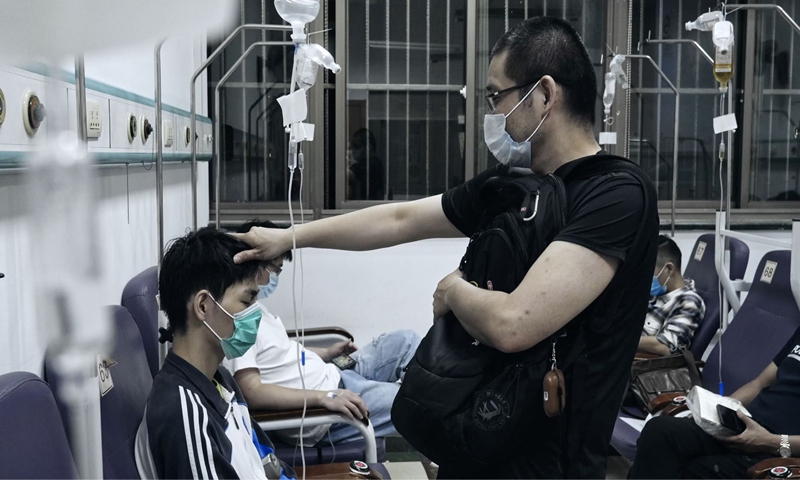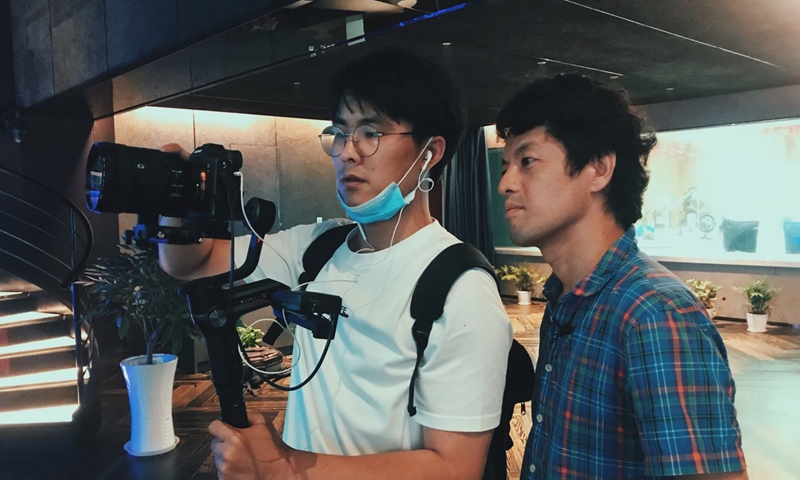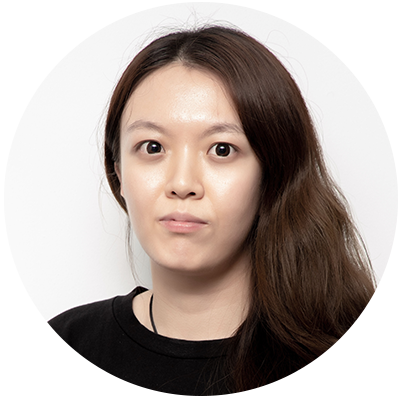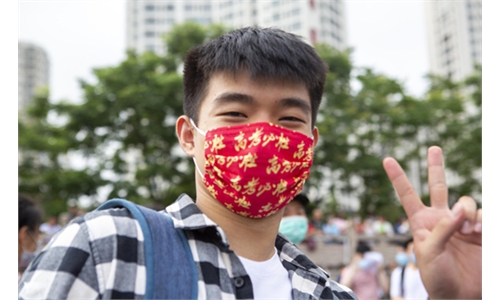ARTS / FILM
Five international directors film TV documentary about 2020 Chinese college entrance examinations

The Shanghai candidate is treated at hospital. Photo: Courtesy of China Review Studio
A 45-minute documentary that examines China’s 2020 college entrance exams, or gaokao, from the perspectives of five directors from different countries has Chinese netizens discussing and reminiscing about the national examinations that were held this year amid the COVID-19 pandemic.
Gaokao 2020 was first released on Chinese streaming platform Bilibili, Tencent and iQiYi on August 29 and then later aired on English-language news channel CGTN on Tuesday and once again on Wednesday. It was shot in five Chinese cities when lockdown measures were at their height in the country.
The exams in 2020 were a huge undertaking, involving 10.71 million candidates, 400,000 examination venues and 945,000 administrators.
The five directors – hailing from China, Japan, Cambodia, the US and the UK – overcame a variety of difficulties to show audiences the experiences of everyday Chinese people as students and their families prepared for the gaokao during the epidemic, according to a statement from China Review Studio, the production company behind the documentary.
China Review Studio aims to introduce Chinese stories to foreign audiences through documentaries. For the gaokao documentary, the studio decided to bring in four foreign directors to better present the important national exams in a way audiences in their home countries could understand.
The first episode was shot by Japanese director Takeuchi Ryo , who focused in his segment on exam volunteers in Nanjing, East China’s Jiangsu Province, such as taxi drivers who volunteered to drive candidates to exam venues.

Japanese director Takeuchi Ryo (right) Photo: Courtesy of China Review Studio
Director Arthur Jones from the UK filmed the second segment, which told the story of a Shanghai candidate who had a serious fever just before the exam.
Many netizens mentioned how the segment made them feel anxious and caused them to recall the accidents and challenges they encountered before the exams.
For his segment, US director Mitchell Farkas followed a candidate in Beijing whose mother was working as a medical worker at an intensive care unit amid the COVID-19 epidemic.
“It was also a challenge for the crew as they had to wear isolation suits while filming the mother at the hospital for the Beijing episode,” an employee at China Review Studio told the Global Times.
Cambodian director Sibxy na PANH and Chinese director Kang Chengye respectively recorded stories of candidates in North China’s Inner Mongolia Autonomous Region and Wuhan, Central China’s Hubei Province.
The four foreign directors acquired a new understanding of the Chinese college entrance examination after making the documentary.
“Whether or not their country's college exam system is similar to China's, they were shocked by the importance that Chinese society and Chinese parents attach to the exam and their children,” the studio said .
In an interview with the Global Times, Takeuchi expressed how surprised he was by what he discovered.
He noted that he was amazed at who the entirety of Chinese society all came together to protect candidates during the exam days.
“Those voluntary drivers, traffic police and fire brigades all joined in the protection efforts,” he said.
It took Takeuchi four days to film the first episode and he noted that he didn’t have much time to prepare ahead of time.
“I had planned to film parents and teachers but was refused, so I chose the group of volunteers to depict the examinations from a sideways perspective.”
The director said that he wants to shoot another documentary about the gaokao once he has more time to prepare in order to record the complete stories of candidates and their families.
During the filming, some crew members also recalled their own gaokao years, an extremely memory in their lives, and noted that 2020’s candidates memories are sure to be even more unusual.


